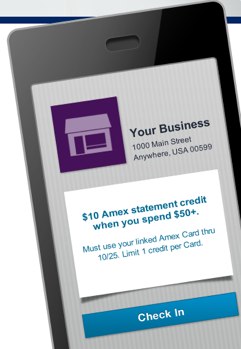When it comes to local commerce, the ultimate prize everyone is going after right now is how to close the redemption loop. The redemption loop starts when a consumer sees an ad or an offer for a local merchant, and is completed when the consumer makes a purchase and that purchase can be tracked back to the offer. If you know who is actually redeeming offers and how much they are spending, you can be much smarter about tweaking and targeting those offers.
Groupon, LivingSocial, and other daily deal sites have created enormous value by pushing the redemption loop the furthest. When someone buys a daily deal, for instance, that translates into cash for the merchant. But for the vast majority of their deals Groupon and LivingSocial do not track whether or not they are ever redeemed, much less the amount each consumer actually spends at the store or restaurant once they show up.
In order to complete the circle and track offers all the way through redemptions, it is necessary to either tap into the payment system or create an alternative way to track redemptions. Different companies are tackling this problem in different ways, but they almost all rely on a shift from emailed coupons to offers delivered through mobile apps.
Next Jump CEO Charlie Kim, who recently partnered with LivingSocial to power daily deals across his commerce network, sees a shift in targeting from broadcasting deals to narrowcasting them. “Blasting out a deal to everyone in New York is not targeting,” he says. “When you broadcast too much in any category, it is just a lot of noise. Email response rates have plummeted for everyone across the industry. What used to be 10% response rates even a year ago, now you are talking the 1% to 2% level.” The constant barrage of emails from Groupon, LivingSocial, and every daily deal copycat is creating user fatigue that is visible in declining response rates.
And that is why mobile is so appealing. If you can send deal notifications to people’s phones based on their exact location and nearby deals, you have the beginnings of narrowcasting. Later on, companies will figure out how to layer on ways to target by income, gender, and other factors as well.
Mobile and local commerce go hand in hand. In a few cities, Groupon is testing out Groupon Now and LivingSocial is offering Instant Deals. In both cases, the deals appear on mobile apps and can be redeemed instantly, rather than having to wait a day for the deal to go live, as is the case with their regular daily deals. The downside of these deals is that Groupon and LivingSocial cannot take advantage of their existing deal inventory and they have to actually provision participating merchants with iPhones and iPads so that they can accept the deals and Groupon/LivingSocial can track them. Yelp is doing something similar where you have to show a redemption code to the merchant from your phone.
Foursquare and Facebook are taking a different approach through their separate partnerships with American Express. Since AmEx is the payment system, it records deal redemptions along with the actual payments. Merchants and consumers don’t have to do anything different from what they normally do. Pay with a credit card and your deal is redeemed. Except it only works if you have an AmEx card and the discount is credited to your account later.
Google is trying to link Google Offers to its Google Wallet, which requires an NFC chip in your phone and an NFC reader at the merchant’s checkout. It has the advantage of working with MasterCard, Citi, and other large payment processors. But it also depends on a brand new technology that will take a long time to become widely available.
The key to closing the redemption loop is definitely payments. Investor Chris Sacca recently told Kevin Rose in a video interview the best reason why Twitter should buy Square is because Twitter has the broadest reach to distribute offers and deals, and Square has a built-in way to track redemption. This was just an off the cuff remark in a friendly chat (Twitter isn’t even in this business yet), but it makes sense.
We are moving from a world of online ads that produce impressions and clicks to online and mobile offers that produce real sales. If the deal companies can figure out a way to actually measure those sales, it could open up local commerce in a massive way that makes what they’ve done so far look like child’s play.
